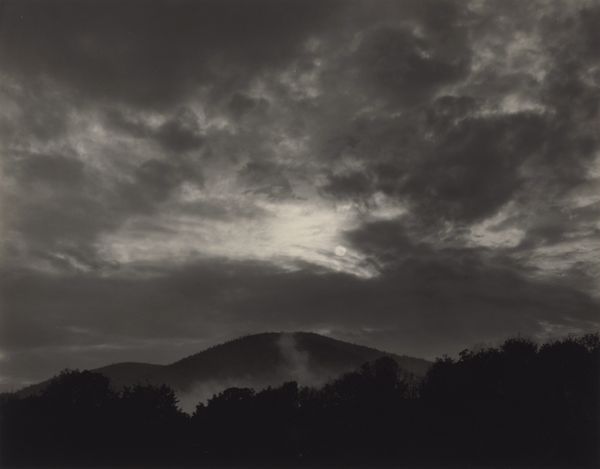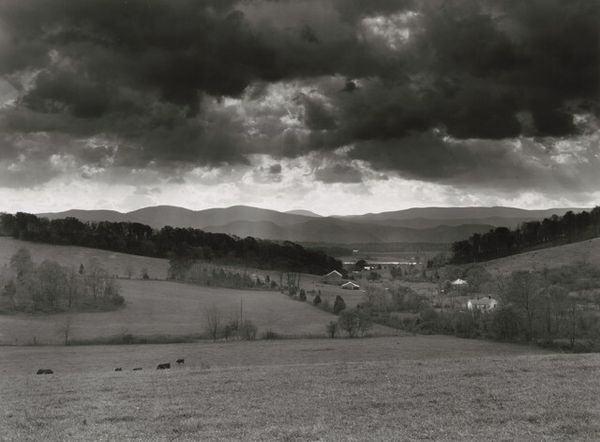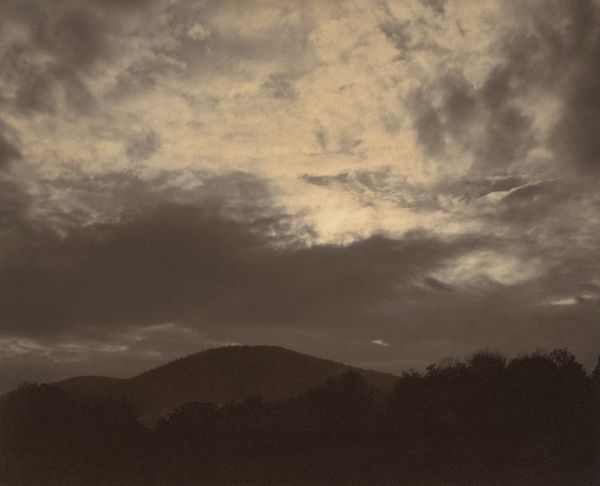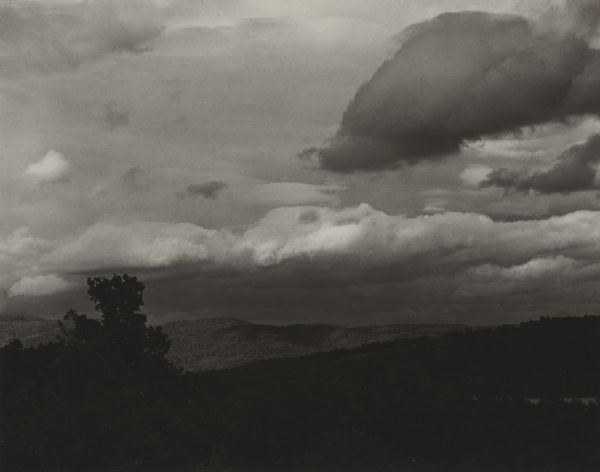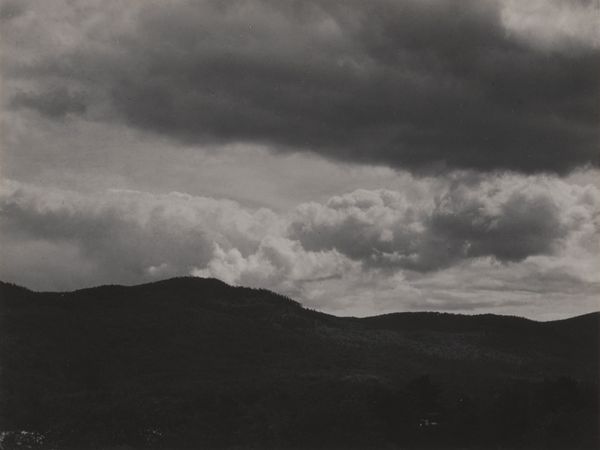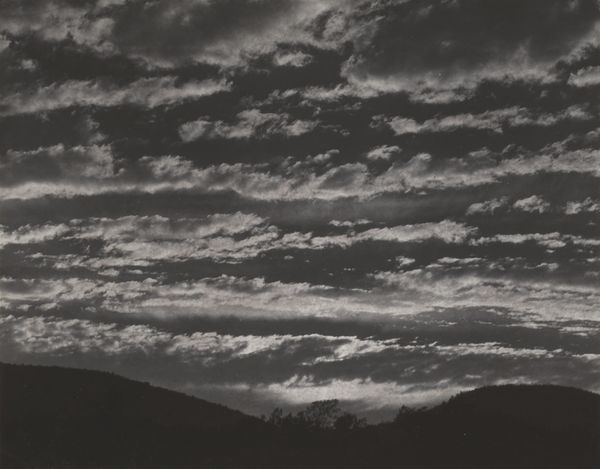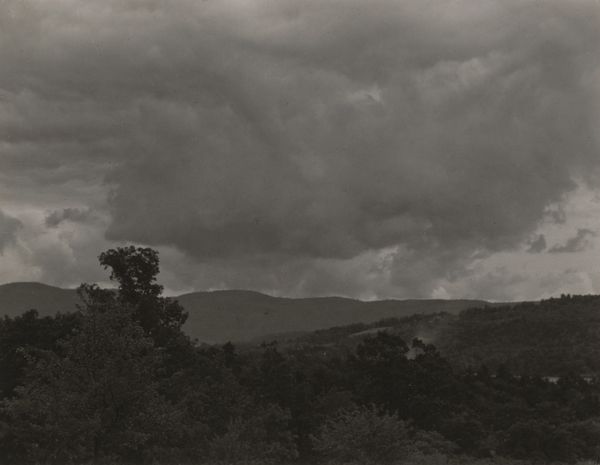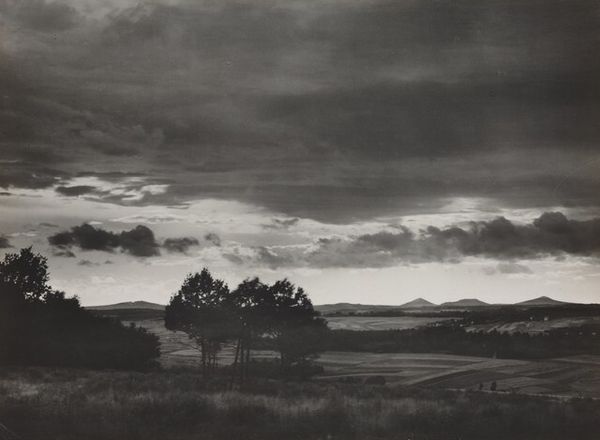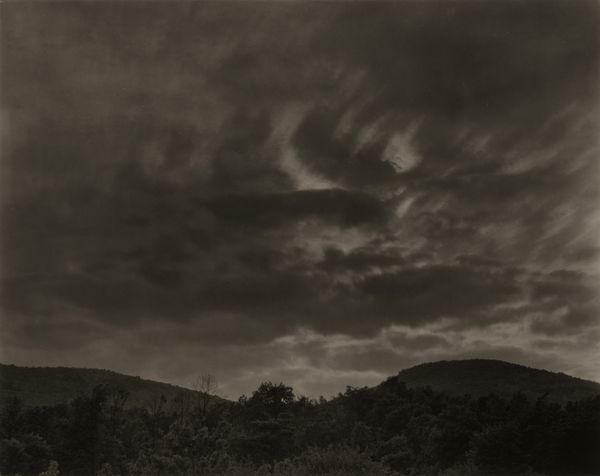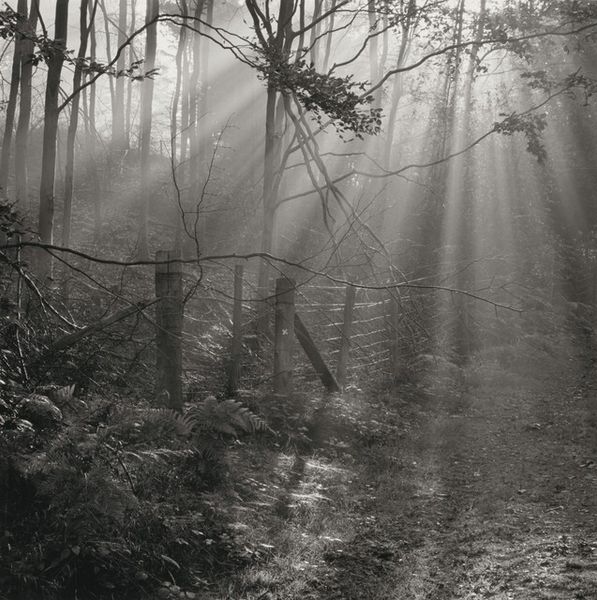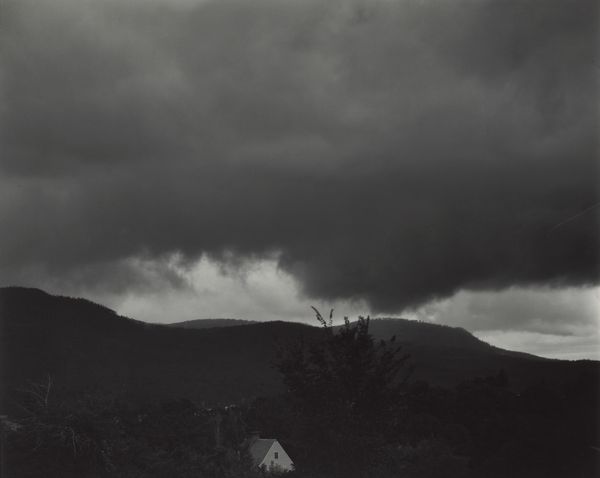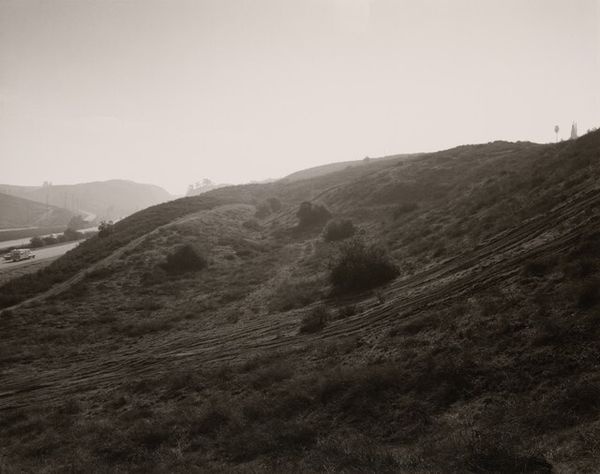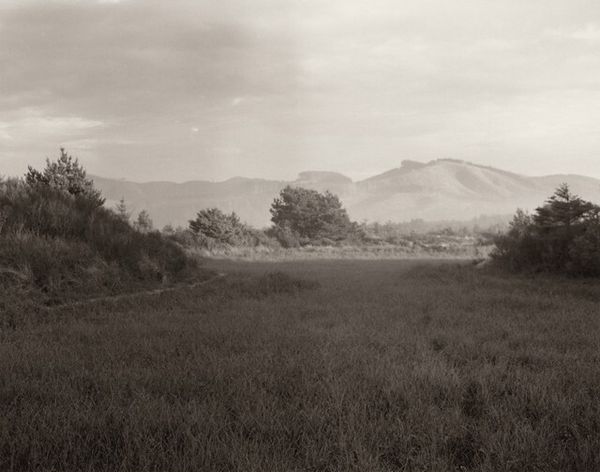
Clearing Storm, Sonoma County Hills, California Possibly 1951 - 1981
0:00
0:00
Dimensions: overall: 48.8 x 34.8 cm (19 3/16 x 13 11/16 in.)
Copyright: National Gallery of Art: CC0 1.0
Curator: Oh, I feel a blanket of cool air just looking at it. What do you see? Editor: A sense of the sublime, really. An Ansel Adams photograph, possibly taken between 1951 and 1981, titled "Clearing Storm, Sonoma County Hills, California." It's a gelatin-silver print, characteristic of his masterful black and white photography. Curator: The fog snaking between the hills is what captures me, as though the land itself is breathing. I suppose some see "monochrome," but I feel like I can almost see hints of violet in the shadows. What a range of tone. It’s amazing how many tones there are without any colors at all. Editor: Yes, the absence of color pushes us to focus on texture, on contrast. Think about the social context of the landscape tradition in art. It has frequently functioned to assert control over land and resources. The absence of any human presence here, though, feels… purposeful. Curator: Do you mean because his earlier landscapes of the West did become implicated in Manifest Destiny and conservationism? I hear you. Maybe here, he's after pure experience, and hoping to help others experience the same: standing on that hillside and letting the weather wash over you. Editor: Precisely. Adams co-founded Group f/64 precisely as a retort to pictorialism: this photograph is about reality, as a form of objectivity that can then reflect upon that subjectivity of seeing the world for the first time. Curator: It’s about bearing witness, not about romanticizing. No doubt, there were conversations happening about representation and who has the privilege of representing these images. Editor: This makes me consider his legacy alongside questions of access and representation within environmental activism itself. Who is afforded the privilege to access, document, and advocate for these spaces? How can landscape photography engage with environmental justice more effectively? Curator: Such a powerful picture, sparking conversations that touch on place, and experience, and ethics. Editor: It certainly resonates across art history and our present moment.
Comments
No comments
Be the first to comment and join the conversation on the ultimate creative platform.
